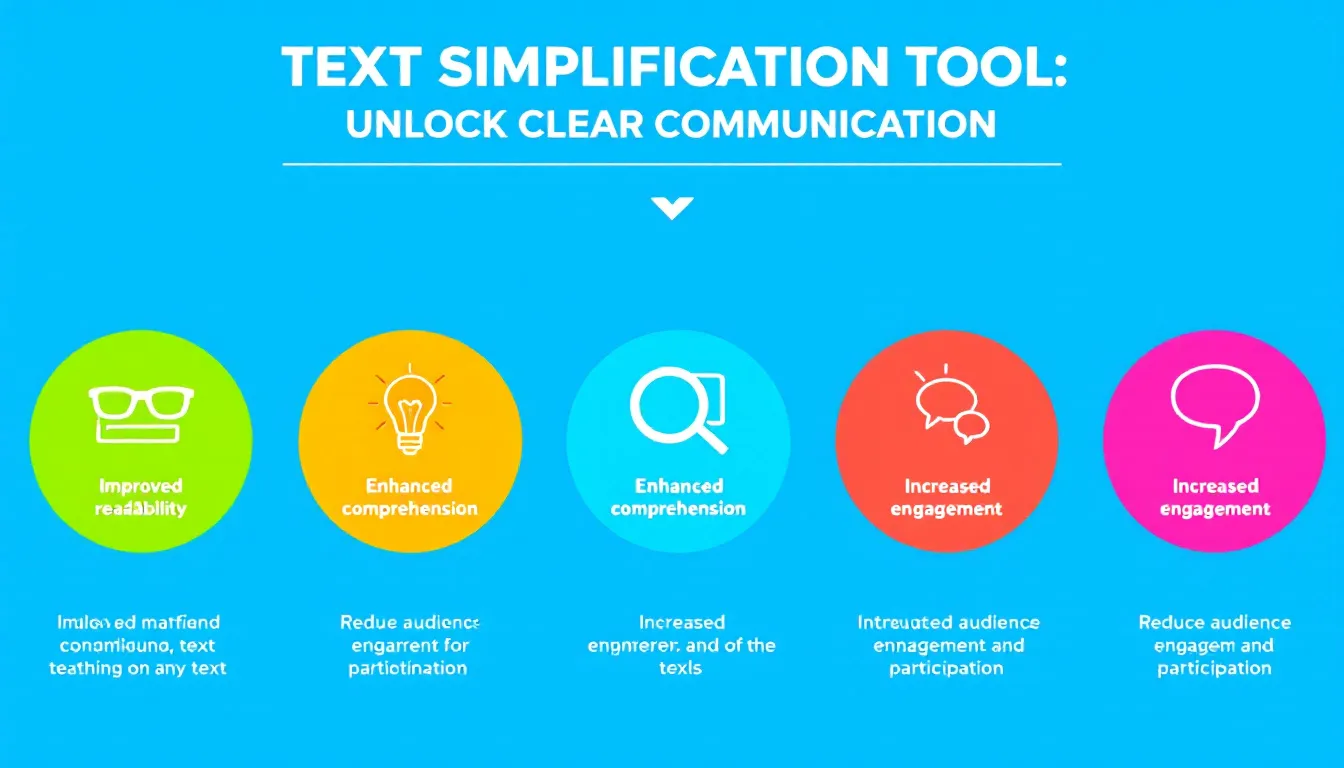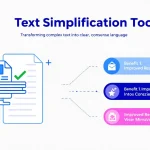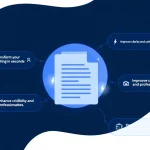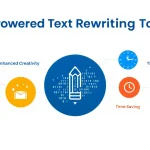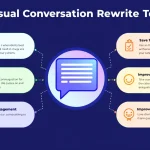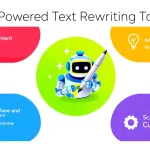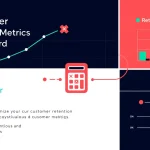Text Simplification Tool
Is this tool helpful?
How to Use the Text Simplification Tool Effectively
Our Text Simplification Tool is designed to make complex content more accessible to a wider audience. Here’s a step-by-step guide on how to use it effectively:
- Enter the Complex Text: In the first text area, paste or type the complex text you want to simplify. For example:
- “The nuances of quantum mechanics elude facile explication, as the underlying principles operate in a realm beyond quotidian human experience, necessitating a paradigm shift in our conceptualization of physical reality.”
- “The symbiotic relationship between fiscal and monetary policy in macroeconomic stabilization is predicated on the judicious calibration of interest rates and government expenditure to mitigate cyclical fluctuations and foster sustainable economic growth.”
- Specify the Target Audience (Optional): In the “Target audience’s education or comprehension level” field, you can enter the intended audience for your simplified text. This helps tailor the output to your specific needs. Examples include:
- “High school students”
- “General public with no specialized knowledge”
- Click “Rewrite Text”: After filling in the required information, click the blue “Rewrite Text” button to start the simplification process.
- Review the Results: Once the processing is complete, the simplified text will appear in the “Simplified Text” section below the form.
- Copy the Results: If you’re satisfied with the simplified text, you can click the “Copy to Clipboard” button to easily paste it into another document or application.
Remember, the tool aims to maintain the original meaning while making the text more accessible. Always review the output to ensure it accurately reflects your intended message.
Unlocking Clear Communication: The Power of Text Simplification
In today’s information-rich world, the ability to communicate complex ideas clearly and concisely is more valuable than ever. Our Text Simplification Tool is designed to bridge the gap between expert knowledge and general understanding, making it an indispensable asset for writers, educators, and professionals across various fields.
This innovative tool leverages advanced natural language processing techniques to transform complex, jargon-filled text into clear, accessible language. By doing so, it opens up a world of information to a broader audience, fostering better understanding and engagement with important concepts and ideas.
The Science Behind Text Simplification
Text simplification is a branch of natural language processing (NLP) that focuses on reducing the linguistic complexity of a text while preserving its original meaning. This process involves several key steps:
- Lexical Simplification: Replacing complex words with simpler synonyms
- Syntactic Simplification: Restructuring complex sentences into simpler ones
- Content Reduction: Removing non-essential information to focus on core concepts
- Elaboration: Adding explanations for difficult terms or concepts
Our tool utilizes state-of-the-art machine learning algorithms to perform these tasks, ensuring that the simplified text remains faithful to the original content while significantly improving readability.
Benefits of Using the Text Simplification Tool
Incorporating our Text Simplification Tool into your writing or communication workflow offers numerous advantages:
1. Enhanced Accessibility
By simplifying complex text, you make your content accessible to a wider audience, including:
- Non-native English speakers
- Readers with varying educational backgrounds
- Individuals with reading difficulties or cognitive impairments
2. Improved Comprehension
Simplified text is easier to understand and remember. This leads to:
- Better retention of information
- Increased engagement with the content
- Reduced cognitive load for readers
3. Time Efficiency
Our tool can quickly simplify large volumes of text, saving you valuable time in:
- Content creation and editing
- Preparing educational materials
- Drafting communications for diverse audiences
4. Consistency in Communication
By using the tool consistently, you can ensure that all your communications maintain a similar level of clarity and accessibility, regardless of the original author or source.
5. SEO Optimization
Search engines favor clear, easily readable content. Simplified text can contribute to:
- Improved search engine rankings
- Increased organic traffic
- Better user experience metrics
Addressing User Needs and Solving Problems
Our Text Simplification Tool is designed to address several common challenges faced by writers, educators, and communicators:
Bridging the Expertise Gap
Experts in specialized fields often struggle to communicate their knowledge to a general audience. Our tool helps bridge this gap by automatically adjusting the language complexity to suit the target audience.
Example:
Original text: “The etiology of autoimmune diseases is multifactorial, involving a complex interplay between genetic predisposition and environmental triggers.”
Simplified version: “Autoimmune diseases are caused by many factors. These include a person’s genes and things in their environment that can set off the disease.”
Enhancing Educational Materials
Educators can use the tool to adapt complex textbook content or academic papers for students at various levels, ensuring that the material is challenging yet accessible.
Example:
Original text: “The phenomenon of photosynthesis involves the conversion of light energy into chemical energy through a series of redox reactions in the thylakoid membranes of chloroplasts.”
Simplified version: “Photosynthesis is how plants turn sunlight into food. It happens in special parts of plant cells called chloroplasts, where light energy is changed into chemical energy that the plant can use.”
Improving Corporate Communications
Businesses can use the tool to ensure that their communications, both internal and external, are clear and easily understood by all stakeholders.
Example:
Original text: “The implementation of our new enterprise resource planning system will facilitate the integration of core business processes and enhance operational efficiency through streamlined data management and real-time analytics.”
Simplified version: “We’re getting a new computer system that will help us work better together. It will make it easier to manage our data and see how we’re doing in real time.”
Practical Applications and Use Cases
The versatility of our Text Simplification Tool makes it valuable across various industries and scenarios:
1. Healthcare Communication
Medical professionals can use the tool to simplify complex medical information for patients, improving health literacy and patient compliance.
Use Case:
A hospital uses the tool to create easy-to-understand discharge instructions for patients, leading to better follow-up care and reduced readmission rates.
2. Legal Document Simplification
Law firms and legal departments can simplify contracts and legal documents, making them more accessible to clients and non-legal professionals.
Use Case:
A tech company uses the tool to create a user-friendly version of their terms of service, resulting in increased user engagement and trust.
3. Academic Publishing
Researchers can use the tool to create lay summaries of their work, making scientific discoveries more accessible to the general public and policymakers.
Use Case:
A climate research institute uses the tool to create simplified versions of their reports for policymakers, leading to more informed decision-making on environmental policies.
4. Technical Documentation
Software companies can simplify their user manuals and documentation, improving the user experience and reducing support tickets.
Use Case:
A software company uses the tool to simplify their API documentation, resulting in faster adoption rates among developers and increased product integration.
5. Financial Reporting
Financial institutions can use the tool to create more accessible versions of their reports and statements for shareholders and the general public.
Use Case:
A bank uses the tool to create simplified quarterly reports for their retail investors, leading to increased shareholder engagement and trust.
Frequently Asked Questions (FAQ)
Q1: Can the Text Simplification Tool handle technical jargon?
A1: Yes, our tool is designed to recognize and simplify technical jargon across various fields. However, it’s always a good idea to review the output to ensure that essential technical terms are preserved when necessary.
Q2: How does the tool determine the appropriate level of simplification?
A2: The tool uses a combination of readability metrics and machine learning algorithms to determine the appropriate level of simplification. You can also guide this process by specifying the target audience’s education or comprehension level in the optional field.
Q3: Can I use this tool for languages other than English?
A3: Currently, our tool is optimized for English text. We are working on expanding support for other languages in future updates.
Q4: Is there a limit to how much text I can simplify at once?
A4: The tool is designed to handle a wide range of text lengths. However, for optimal performance and accuracy, we recommend simplifying text in manageable chunks, especially for very long documents.
Q5: How can I ensure that the simplified text maintains the original meaning?
A5: While our tool is designed to preserve the original meaning, it’s always a good practice to review the simplified output. This allows you to catch any nuances that may need adjustment and ensure that the simplified version accurately reflects your intended message.
Q6: Can this tool be integrated into my content management system or writing software?
A6: We offer API access for enterprise users who wish to integrate our Text Simplification Tool into their existing workflows. Please contact our support team for more information on integration options.
Q7: How often is the tool updated?
A7: We continuously work on improving our algorithms and expanding our language models. Updates are rolled out regularly to ensure that users always have access to the most advanced text simplification capabilities.
Q8: Can this tool help with SEO optimization?
A8: Yes, simplifying your content can contribute to better SEO performance. Search engines favor clear, easily readable content, which can lead to improved rankings and increased organic traffic.
Q9: Is the tool suitable for creative writing or literary works?
A9: While the tool is primarily designed for informational and technical content, it can be used as a starting point for simplifying literary works. However, creative writing often relies on nuanced language and stylistic choices, so manual review and editing are crucial in these cases.
Q10: How does the tool handle industry-specific terminology?
A10: Our tool is trained on a wide range of industry-specific vocabularies. It aims to preserve essential terminology while simplifying surrounding context. However, for highly specialized fields, we recommend reviewing the output to ensure that critical terms are maintained appropriately.
By leveraging our Text Simplification Tool, you can enhance the clarity and accessibility of your communications, reaching a wider audience and ensuring that your message is understood as intended. Whether you’re an educator, a business professional, or a content creator, this tool can help you bridge the gap between complex ideas and general understanding, fostering better communication in our increasingly connected world.
Important Disclaimer
The calculations, results, and content provided by our tools are not guaranteed to be accurate, complete, or reliable. Users are responsible for verifying and interpreting the results. Our content and tools may contain errors, biases, or inconsistencies. We reserve the right to save inputs and outputs from our tools for the purposes of error debugging, bias identification, and performance improvement. External companies providing AI models used in our tools may also save and process data in accordance with their own policies. By using our tools, you consent to this data collection and processing. We reserve the right to limit the usage of our tools based on current usability factors. By using our tools, you acknowledge that you have read, understood, and agreed to this disclaimer. You accept the inherent risks and limitations associated with the use of our tools and services.
